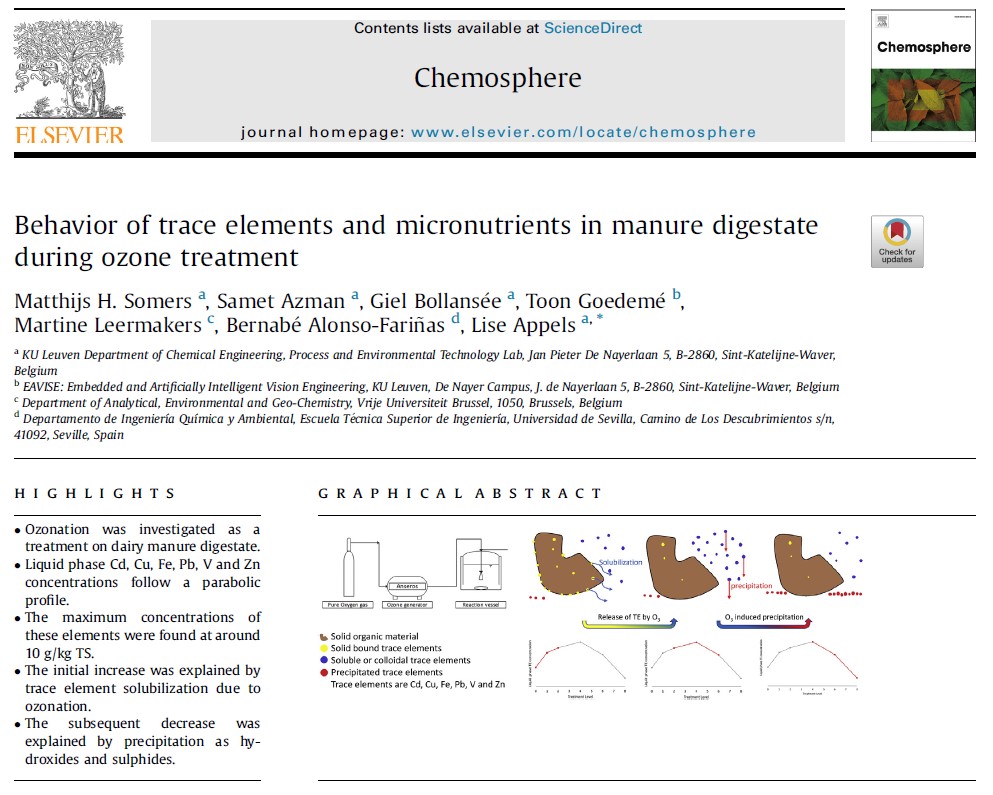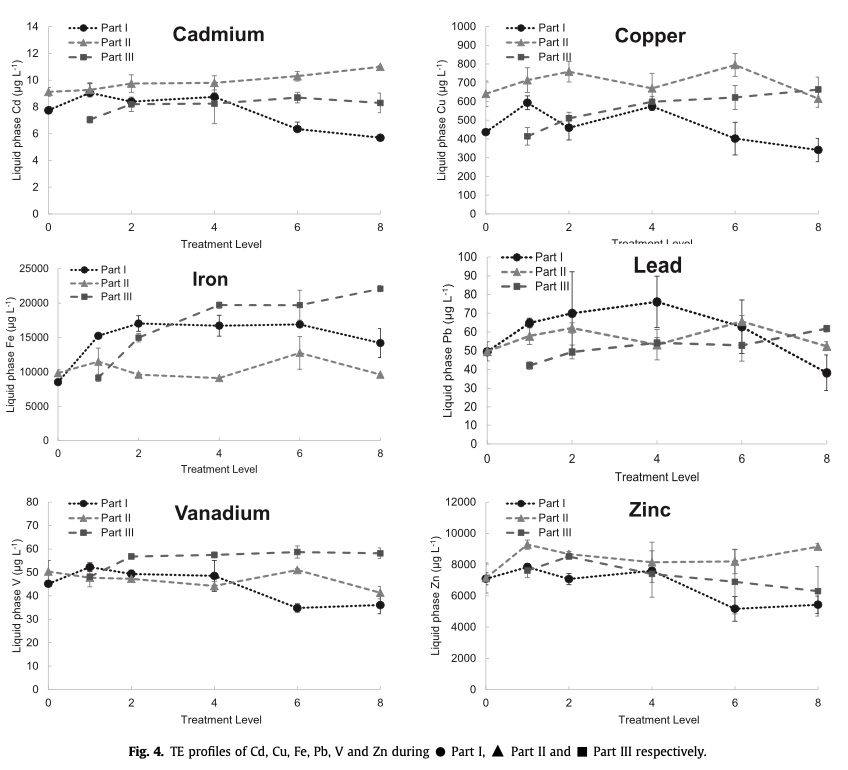Digestate treatment techniques have recently been proposed as a strategy to increase the ultimate biogas yield from dairy manure and to improve the digestate quality as an organic fertilizer. These studies however rarely take the trace elements and nutrient partitioning into account. This study focusses on ozone treatment (5-40 g O3 kg-1 Total Solids (TS)) as a digestate treatment technique to control the concentration of TE and nutrients in the liquid phase of the digestate. Controlling the trace elements and nutrient concentrations in the liquid and solid digestate can improve the agronomic value of dairy manure digestate. The ozone concentration of the gas stream entering reactor was 48.53 g O3/Nm3 or 3.4% w/w O3 in O2-gas. The experiments were repeated using pure oxygen gas to investigate its influence. The results from ozonation and oxygenation of the dairy manure digestates revealed that O3 treatment up to 40 g O3 kg-1 TS did not have a more pronounced effect on the biochemical parameters compared to supplementation of pure O2. Ozonation of the digestate and the supernatant showed that the trace elements con- centration in the liquid phase followed a parabolic profile. The observed initial increase in this parabolic profile was explained by the release of trace elements from the organic matter to the supernatant causing an increase in trace elements concentration, followed by a decrease due to precipitation of trace elements as hydroxides and sulfides, due to the increasing pH and sulphur concentrations.
Reference to the paper: Matthijs H. Somers, Samet Azman, Giel Bollanse, Toon Goedeme, Martine Leermakers, Bernabe Alonso-Farinas, Lise Appels (2020). Chemosphere 252, 126477.
https://doi.org/10.1016/j.chemosphere.2020.126477
Acknowledgements: The authors would like to thank FWO, the Research Foundation Flanders, Belgium (1S68017 N) and the Short-Term Scientific Mission within the COST Action ES 1302 European Network on Ecological function of trace metals in anaerobic biotechnologies (COST-STSM-ES1302-34176)-European Commission (2016) for the financial support.


